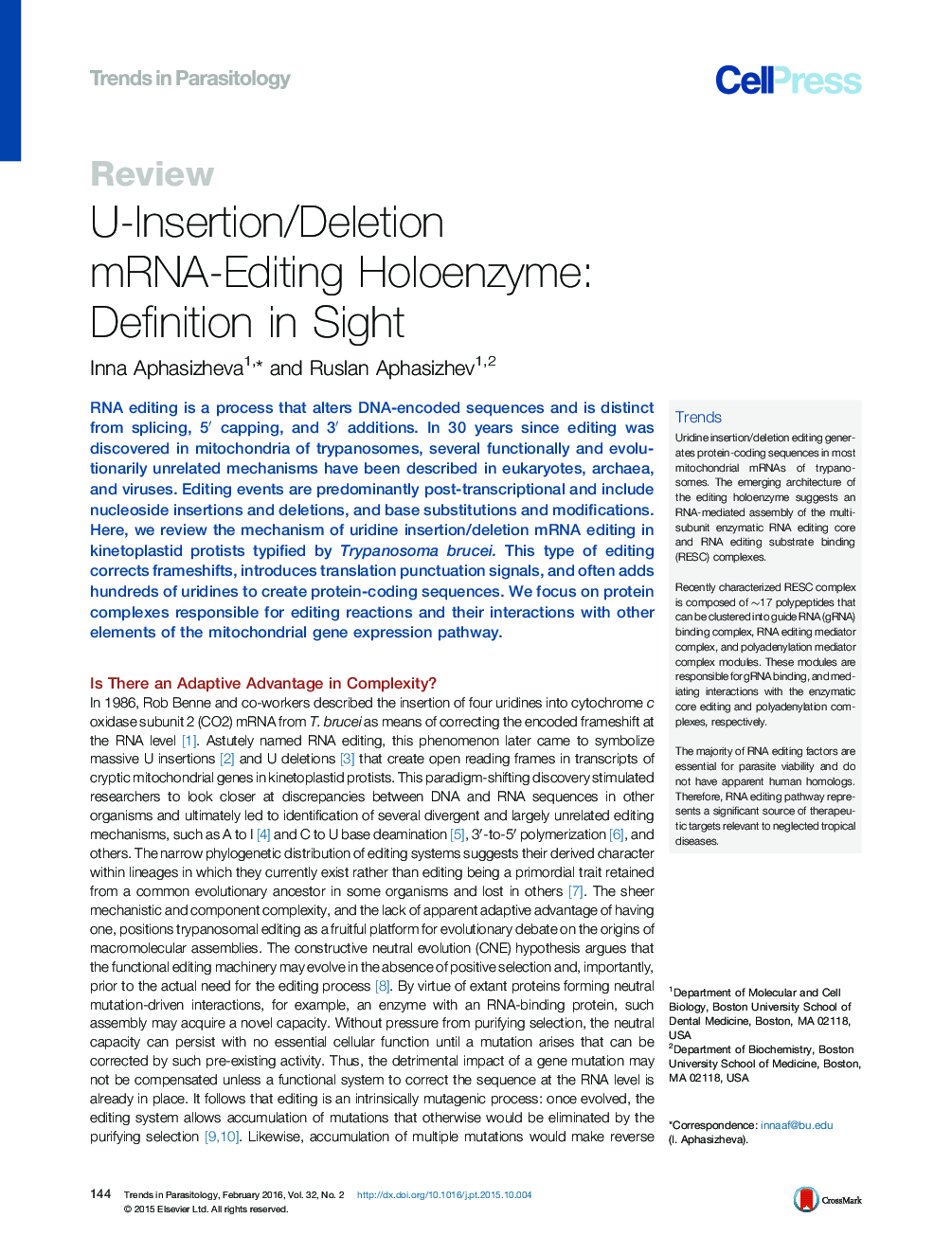| Article ID | Journal | Published Year | Pages | File Type |
|---|---|---|---|---|
| 3422995 | Trends in Parasitology | 2016 | 13 Pages |
RNA editing is a process that alters DNA-encoded sequences and is distinct from splicing, 5′ capping, and 3′ additions. In 30 years since editing was discovered in mitochondria of trypanosomes, several functionally and evolutionarily unrelated mechanisms have been described in eukaryotes, archaea, and viruses. Editing events are predominantly post-transcriptional and include nucleoside insertions and deletions, and base substitutions and modifications. Here, we review the mechanism of uridine insertion/deletion mRNA editing in kinetoplastid protists typified by Trypanosoma brucei. This type of editing corrects frameshifts, introduces translation punctuation signals, and often adds hundreds of uridines to create protein-coding sequences. We focus on protein complexes responsible for editing reactions and their interactions with other elements of the mitochondrial gene expression pathway.
TrendsUridine insertion/deletion editing generates protein-coding sequences in most mitochondrial mRNAs of trypanosomes. The emerging architecture of the editing holoenzyme suggests an RNA-mediated assembly of the multi-subunit enzymatic RNA editing core and RNA editing substrate binding (RESC) complexes.Recently characterized RESC complex is composed of ∼17 polypeptides that can be clustered into guide RNA (gRNA) binding complex, RNA editing mediator complex, and polyadenylation mediator complex modules. These modules are responsible for gRNA binding, and mediating interactions with the enzymatic core editing and polyadenylation complexes, respectively.The majority of RNA editing factors are essential for parasite viability and do not have apparent human homologs. Therefore, RNA editing pathway represents a significant source of therapeutic targets relevant to neglected tropical diseases.
